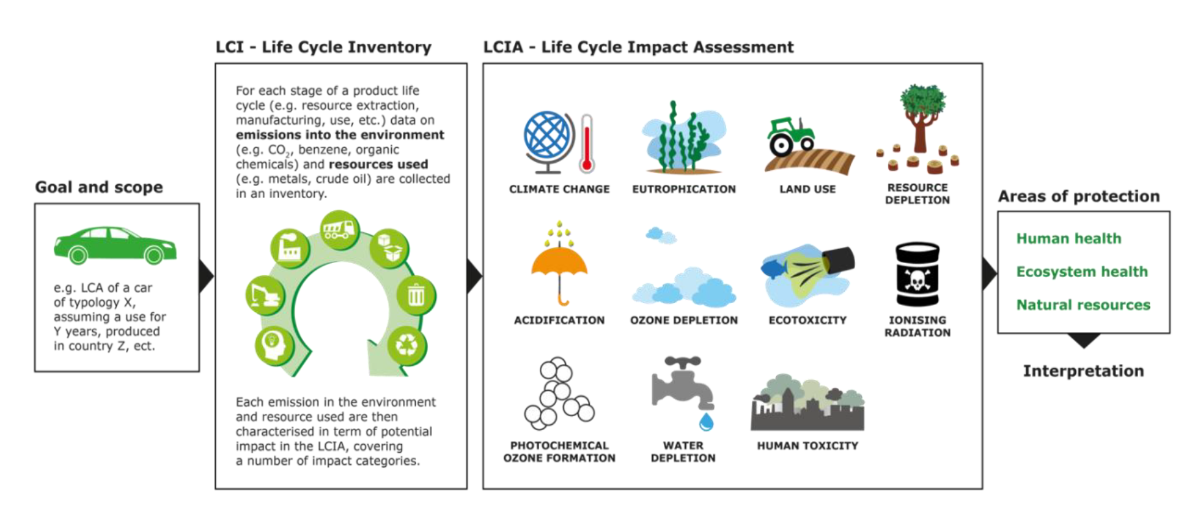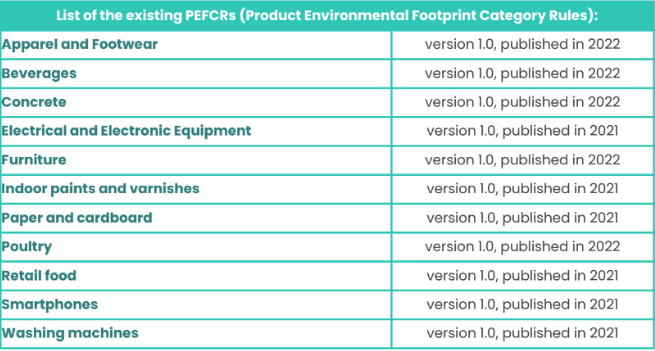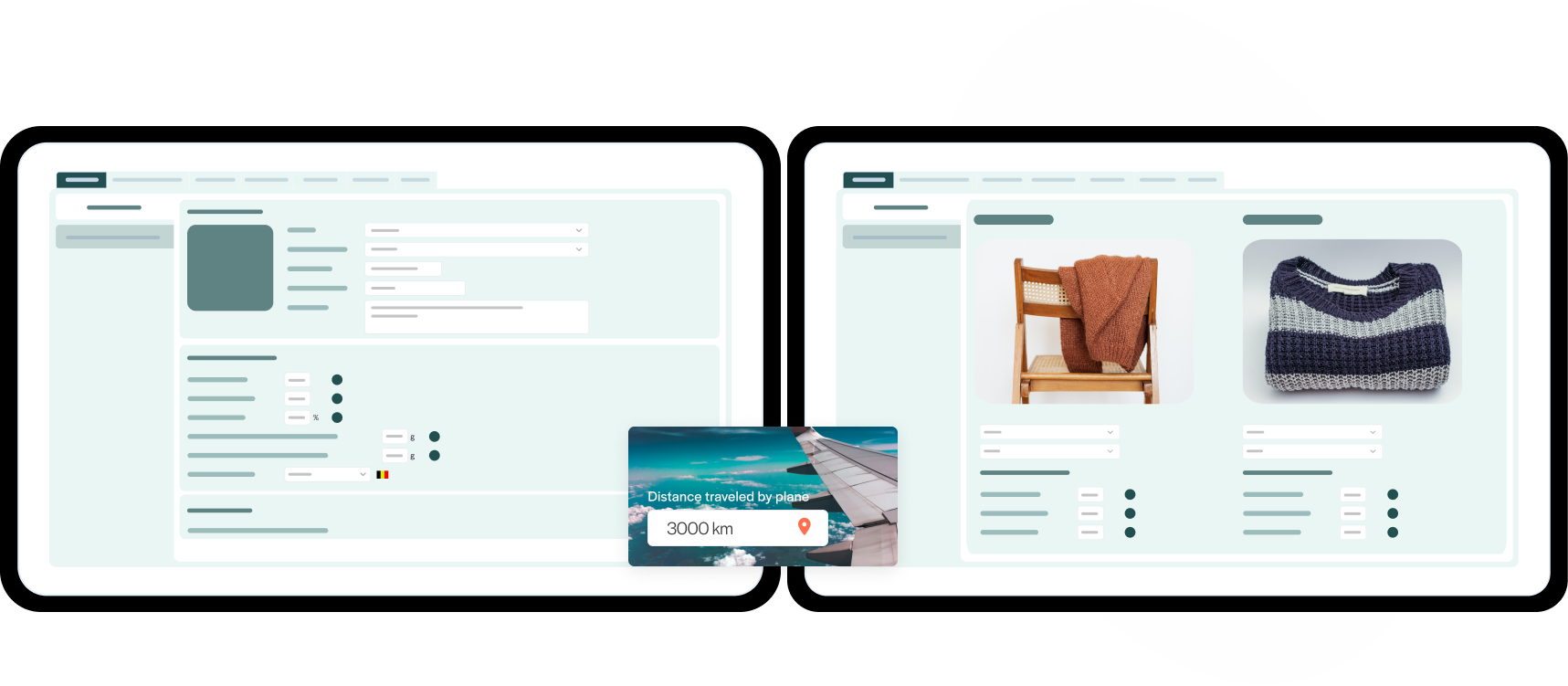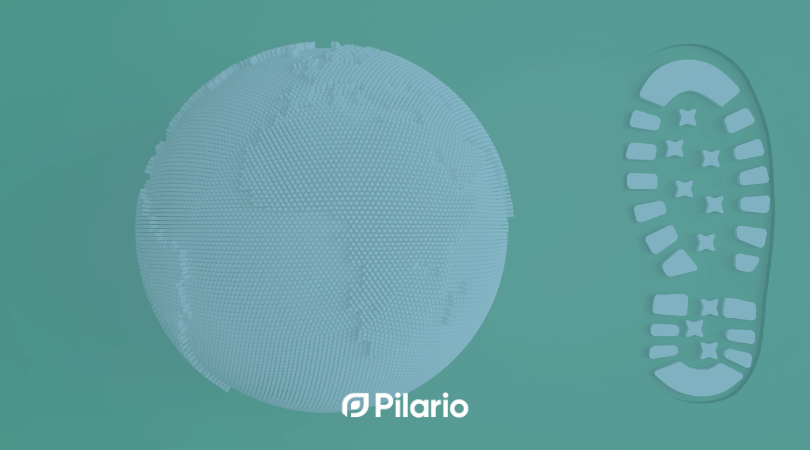08/03/2024
How PEFCR Standardizes Sustainability: A Deep Dive into Product Environmental Footprint Category Rules
Discover how to navigate and benefit from Product Environmental Footprint Category rules in our in-depth guide.

22 September 2023
In the ever-changing world of sustainability and ecological awareness, both businesses and individuals are more focused on reducing their environmental impact. This increased awareness has resulted in the establishment of several approaches and standards devoted to analyzing and improving environmental performance.
In this article, we’ll explore these approaches, giving you a deeper understanding of their differences and practical uses.
Also referred to as LCA. Companies use LCA analysis, a systematic methodology, to evaluate the environmental impacts of a product, process, or service throughout its entire lifecycle (from cradle to grave). This encompasses every stage, from raw material extraction to production, distribution, use, and end-of-life.
Leading international standards, such as ISO 14040 and ISO 14044, ensure consistent and transparent LCA studies. This makes it easier to compare and communicate results. Organizations often use these standards in Corporate Social Responsibility (CSR) reporting to convey their environmental impact and sustainability efforts to stakeholders.

Many companies are utilizing Life Cycle Assessments (LCAs), a popular environmental assessment method. They use it to pinpoint environmental hotspots in their products or organizations, leading to sustainable improvements.
LCAs provide a comprehensive perspective on environmental performance. This makes them crucial for organizations looking to lower their carbon footprint, streamline processes, and make knowledgeable sustainability decisions.
The Circular Economy Action Plan is a key component of the EU Green Deal, designed to accelerate the transition towards a sustainable and resource-efficient economy.
This comprehensive action plan aims to change production and consumption habits. It focuses on cutting waste and emissions and embracing circular economy principles.
Life Cycle Assessment (LCA) serves as a crucial tool for businesses moving towards a circular economy. It allows them to measure the environmental impact of their products across their life cycle and identify ways to reduce their ecological footprint.
Here are the key advantages of LCA in the context of circular economy implementation:
In summary, LCA empowers businesses to enhance resource efficiency, design more sustainable products, cultivate circular business models, and communicate effectively in their journey toward a circular economy.
In addressing misleading environmental claims, the European Parliament’s new Green Claims Directive seeks to enhance consumer protection. As stated by Andrus Ansip, “Over 50% of environmental claims are misleading. The directive aims to clarify and lessen the burden for traders.” For more details, read the full press release here.
The European Commission’s Product Environmental Footprint (PEF) method aims to assist companies. It enables them to make well-supported claims about their products’ environmental impacts. Additionally, it helps reduce the cost of assessments and enhances product comparisons.
In Europe, the adoption of the Product Environmental Footprint (PEF) methodology has gained momentum and is closely linked to legislative initiatives. The European Commission actively promotes PEF as part of its sustainability agenda.
Specifically, the PEF methodology aligns with the European Green Deal, which aims to make the European Union climate-neutral by 2050 and transition to a circular economy.
Additionally, the Single Market for Green Products initiative, introduced under the EU’s Circular Economy Action Plan, encourages the use of PEF for environmental labeling and information. These legislative efforts highlight the significance of PEF methodology in promoting sustainability practices. They ensure uniformity in evaluating and communicating environmental impacts across products and industries within the European Union. Consequently, PEF benefits businesses by enhancing their value. It also aids in meeting regulatory requirements and aligning with European sustainability objectives.
The incorporation of PEF methodology in LCA frameworks significantly enhances value. It provides increased accuracy, consistency, transparency, and policy conformity. This approach not only assists businesses in minimizing their environmental footprint and cutting emissions. But also syncs with global sustainability objectives. As a result, it contributes to the development of a more sustainable and circular economy.
For those interested in diving deeper into the specifics of the PEF method and its application across various industries: our comprehensive guide offers a detailed exploration. This guide covers everything from the foundational principles of PEFs to their real-world implications and benefits for sustainability practices. Discover our in-depth guide to the PEF method here.

When it comes to environmental analysis, Life Cycle Assessments (LCAs) are the go-to method. They help quantify a wide array of environmental impacts (16 impact categories in total). Such as greenhouse gas emissions, energy consumption (from cradle to grave), and water consumption throughout a product’s lifecycle.
On the contrary, Product Environmental Footprints (PEFs) offer a systematic method for Life Cycle Assessments (LCAs). They are defined by clear guidelines and principles, ensuring consistency and reliability. Which effectively standardize the entire process. The core objective of PEF, a European methodology, is to ensure consistent and comparable communication with consumers and all relevant stakeholders.
The European Commission also established instructions to establish PEF category rules (PEFCR). A ruleset describing how to calculate the environmental footprint of a specific product group. The Environmental Footprint (EF) database is designed to support the use of these product environmental footprint category rules (PEFCR). The resulting rules, once implemented, will be applicable in the entire EU market.
The application of Category Rules (a set of specific guidelines and standards for environmental assessments) and the PEFCR (Product Environmental Footprint Category Rules) methodology, known for its comprehensive approach, adds substantial value to businesses and sectors. By establishing a consistent framework and fostering precision, credibility, and innovation in environmental assessments. They enable companies to meet regulatory requirements more effectively.
Moreover, these methods enhance consumer trust by ensuring transparent and reliable environmental information. This, in turn, leads to cost reductions through more informed decision-making. Additionally, the support they provide to global sustainability initiatives is instrumental in driving positive environmental change. Therefore, Category Rules and the PEFCR methodology are indispensable methods for those striving to advance sustainability practices.
For a deeper understanding of how PEFCR can be applied to improve sustainability efforts in various sectors, our detailed guide is a valuable resource. Check out our comprehensive guide to PEFCR to explore further.

At Pilario, we don’t just offer LCA software, we provide the tools to supercharge your sustainability journey!
Our cutting-edge suite of software solutions is meticulously designed to align with the strictest EU Product Environmental Footprint Category Rules.
With Pilario, you’re unlocking a world of reliable environmental assessments, easily environmental scores, and a suite of communication opportunities with your valued customers and stakeholders. All driven by the insights from your LCA results.
Picture this: within minutes, you can calculate the precise environmental impact of your product, fully compliant with industry-leading PEFCR regulations. We’re not just a software as a service; we’re your partners on the path to sustainability excellence.
Ready to supercharge your sustainability journey? It’s as simple as reaching out to us – your go-to sustainability experts, eager to help you every step of the way!


08/03/2024
Discover how to navigate and benefit from Product Environmental Footprint Category rules in our in-depth guide.

15/03/2024
Discover how to navigate and benefit from Product Environmental Footprint Category rules, in our in-depth guide.

07/03/2024
Unlock the EU's Product Environmental Footprint secrets: Drive sustainable choices and green innovation.

26/01/2024
Uncover the difference between LCA and carbon footprint. Embark on a journey of sustainability with our expert guide!